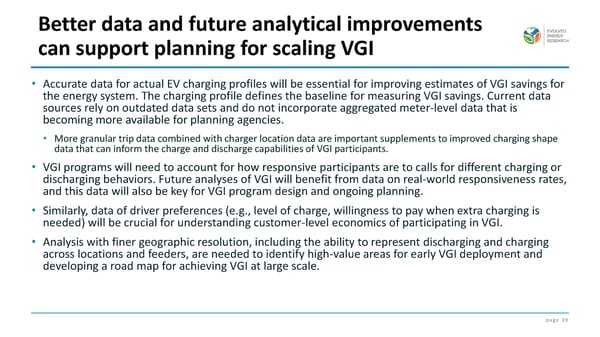page 39 • Accurate data for actual EV charging profiles will be essential for improving estimates of VGI savings for the energy system. The charging profile defines the baseline for measuring VGI savings. Current data sources rely on outdated data sets and do not incorporate aggregated meter-level data that is becoming more available for planning agencies. • More granular trip data combined with charger location data are important supplements to improved charging shape data that can inform the charge and discharge capabilities of VGI participants. • VGI programs will need to account for how responsive participants are to calls for different charging or discharging behaviors. Future analyses of VGI will benefit from data on real-world responsiveness rates, and this data will also be key for VGI program design and ongoing planning. • Similarly, data of driver preferences (e.g., level of charge, willingness to pay when extra charging is needed) will be crucial for understanding customer-level economics of participating in VGI. • Analysis with finer geographic resolution, including the ability to represent discharging and charging across locations and feeders, are needed to identify high-value areas for early VGI deployment and developing a road map for achieving VGI at large scale. Better data and future analytical improvements can support planning for scaling VGI
 Exploring the Value of Vehicle to Grid (V2G) for California Page 38 Page 40
Exploring the Value of Vehicle to Grid (V2G) for California Page 38 Page 40